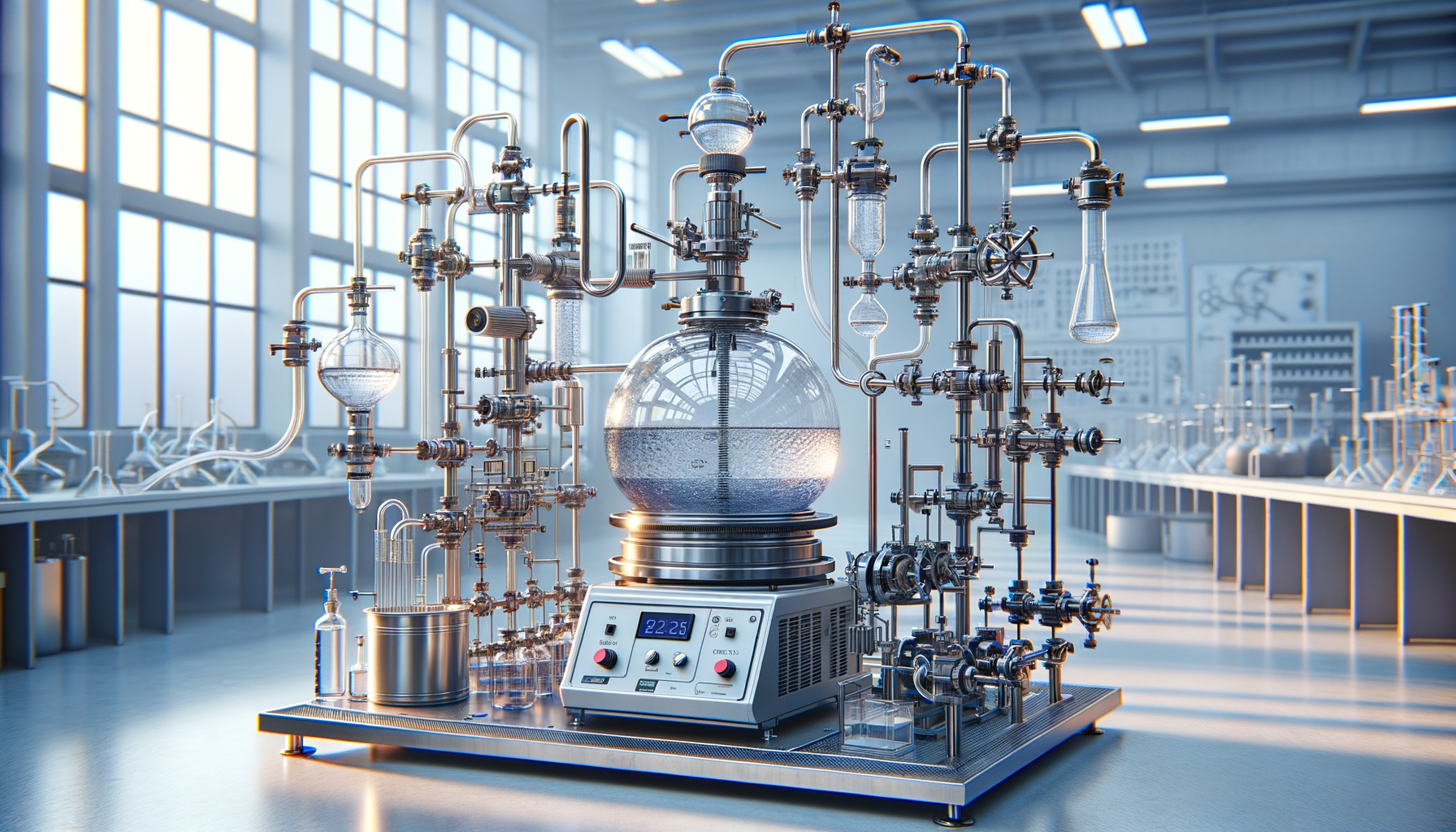Rotary Evaporators: Efficient Solutions for Solvent Removal
Rotary evaporators allow fast and gentle solvent removal, ideal for labs needing efficient concentration, purification, or distillation.

Introduction to Rotary Evaporators
In the realm of laboratory equipment, rotary evaporators stand out as indispensable tools for the efficient removal of solvents. These devices are designed to perform the delicate task of solvent evaporation, which is crucial in various scientific and industrial processes. By using a combination of gentle heating and reduced pressure, rotary evaporators allow for the fast and gentle removal of solvents. This method is particularly advantageous in preserving the integrity of sensitive compounds that might degrade under more aggressive conditions.
The relevance of rotary evaporators extends across numerous fields, including chemistry, biology, and pharmaceuticals. Their ability to concentrate, purify, and distill solutions makes them a staple in laboratories aiming for precision and efficiency. Whether it’s for preparing samples, purifying extracts, or concentrating solutions, rotary evaporators offer a reliable and effective solution.
How Rotary Evaporators Work
The operation of a rotary evaporator involves a few key components that work in harmony to achieve solvent removal. At the heart of the process is the rotating flask, which contains the solution from which the solvent needs to be removed. The rotation increases the surface area of the liquid, enhancing the rate of evaporation. This is particularly useful for high boiling point solvents that require more energy to evaporate.
Another critical component is the water or oil bath, which provides gentle heating to the rotating flask. This controlled heat application is crucial for the evaporation process, as it ensures that the solvent is vaporized without degrading the solute. The evaporated solvent is then condensed back into a liquid by a condenser, which is typically cooled by a circulating fluid.
The entire process is conducted under reduced pressure, thanks to a vacuum system, which lowers the boiling point of the solvent. This not only accelerates the evaporation process but also allows for the evaporation of solvents at temperatures that are safe for heat-sensitive compounds.
Applications and Benefits of Rotary Evaporators
Rotary evaporators are highly valued for their versatility and efficiency in various applications. In the pharmaceutical industry, they are used for the concentration of drug solutions and the purification of active pharmaceutical ingredients. In chemistry labs, they facilitate the removal of solvents after reactions, making them essential for sample preparation and analysis.
The benefits of using rotary evaporators are numerous:
- They provide a gentle method for solvent removal, preserving the integrity of heat-sensitive compounds.
- The process is efficient, significantly reducing the time required for evaporation compared to traditional methods.
- They are versatile, capable of handling a wide range of solvents and sample types.
- The reduced pressure operation enhances safety by minimizing the risk of hazardous solvent vapors escaping into the laboratory environment.
These advantages make rotary evaporators a preferred choice in laboratories focused on achieving high-quality results with efficiency and safety.
Choosing the Right Rotary Evaporator
Selecting the appropriate rotary evaporator for a specific application involves considering several factors. The size of the rotating flask is a primary consideration, as it determines the volume of solution that can be processed at one time. Laboratories with high throughput requirements may opt for larger flasks to increase productivity.
The choice of heating bath is also crucial. Water baths are commonly used for their simplicity and effectiveness, but oil baths can be employed for higher temperature applications. The nature of the solvent being evaporated will often dictate the type of condenser required, with options ranging from simple coil condensers to more complex configurations designed for specific solvent types.
Additionally, the vacuum system’s capacity and the control features of the rotary evaporator are important. Advanced models offer precise control over rotation speed and bath temperature, allowing for more tailored and efficient operations. By carefully considering these factors, users can select a rotary evaporator that meets their specific needs and maximizes laboratory efficiency.
Conclusion: The Impact of Rotary Evaporators in Modern Labs
Rotary evaporators have become an integral part of modern laboratories due to their efficiency and versatility in solvent removal. By enabling fast and gentle evaporation, they support a wide range of applications across different scientific fields. The careful design and operation of these devices ensure that sensitive compounds are preserved, and laboratory processes are conducted safely and efficiently.
As technology advances, rotary evaporators continue to evolve, offering even greater precision and control. For laboratories seeking to enhance their capabilities in concentration, purification, and distillation, rotary evaporators represent a valuable investment. Their impact on laboratory efficiency and productivity underscores their importance in scientific and industrial settings.